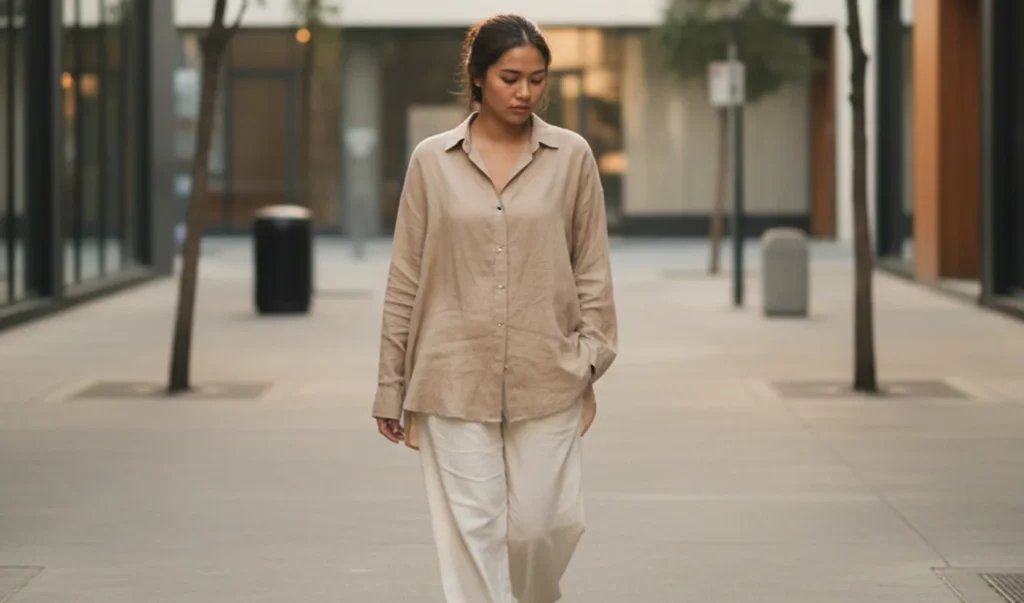Most of us can name at least one piece in our closet that hasn’t seen the light of day. Maybe it’s a dress that still has its tag, jeans that no longer fit, or a blazer we bought in anticipation of a job that never happened. These items quietly take up space, reminding us of different versions of ourselves—past, imagined, or hoped-for.
The question is: why do we keep them? The answer usually has less to do with fashion and more to do with the emotions stitched into the fabric.
This article explores the hidden reasons behind why we hold on to clothes, the emotional weight they carry, and how letting go can free up not just closet space, but also mental and emotional space in our lives.
Clothes as Symbols of Hope

Unworn clothes often carry dreams of who we hope to become. Those smaller-size jeans hanging in the closet might represent a version of ourselves that feels healthier, fitter, or more confident. That sequined dress tucked away for “the right occasion” might symbolize a future where we feel bold enough to take up space without apology.
When we look at these pieces, they aren’t just garments—they’re stand-ins for aspirations. We hold onto them because releasing them feels like giving up on those possibilities. But hope, even in fabric form, can weigh us down. Instead of motivating us, these reminders often create quiet tension each time we glance their way.
The hidden cost is emotional. Every encounter with those unworn clothes can remind us of what we haven’t achieved or who we haven’t yet become. Instead of being a source of inspiration, they turn into subtle reminders of what feels out of reach, which over time chips away at our confidence.
Clothes and the Guilt Factor

Another reason clothes linger is guilt. Perhaps you splurged on something expensive, telling yourself it was an “investment piece,” only to find it uncomfortable or impractical. Or maybe it was a thoughtful gift from a friend or family member, and letting go feels like letting them down.
This guilt attaches itself to the fabric, making it harder to part ways. The items remain in the closet, not because they serve you, but because they serve the idea of avoiding regret. You might push them to the back, out of sight, yet still feel their presence whenever you sort through your wardrobe.
The reality is that keeping them doesn’t erase guilt—it prolongs it. The money has already been spent, the gesture of the gift already received. By holding onto something you don’t wear, you extend the emotional burden instead of freeing yourself from it.
Sentimental Attachments

Clothing is also tied to memory in powerful ways. A jacket from your college years might hold the spirit of independence and discovery. A scarf from a loved one who has passed away might feel like a tangible connection to their presence. These garments hold emotional weight far beyond their fabric and design.
It’s why they are often the hardest to let go of. Releasing them can feel like erasing the experiences or people they remind us of. To part with them feels like parting with pieces of ourselves, as if the memories might fade without the physical object to anchor them.
But the truth is, memories live within us, not within fabric. Sometimes, choosing to keep just one deeply meaningful piece or taking a photo of an item before donating it allows us to honor the memory while still moving forward. This balance helps us hold on to what truly matters without drowning in clutter.
The Psychology of Holding On

Psychologists call this tendency loss aversion—a natural bias where we feel the pain of losing something more strongly than the joy of gaining something new. This explains why a closet can stay packed with unworn clothes; it feels safer to keep them than face the discomfort of letting them go.
The problem is, clothes don’t remain neutral when they’re not worn. Instead, they transform into emotional clutter, taking up space not only in our closets but in our minds. Each unworn piece adds to a sense of heaviness, reminding us of unfulfilled hopes, lingering guilt, or unresolved memories.
Over time, this weight can prevent us from fully appreciating the clothes we do love. A crowded wardrobe makes it harder to see, access, and celebrate the pieces that actually fit and empower us today. Letting go isn’t just about tidying up—it’s about releasing emotional baggage that limits our freedom.
Letting Clothes Do Their Job

At their core, clothes are meant to be lived in. They’re designed to move with us, support us, and reflect our identity in the present moment. When an item no longer serves those roles, keeping it confined to a hanger strips it of its purpose.
Releasing clothes—through donation, resale, or passing them on—allows them to fulfill the life they were created for. In someone else’s hands, they might become a cherished piece, rather than a forgotten one. Letting go is not wasteful; it’s a way of giving garments new life.
And in return, you gain space. Not just physical room in your closet, but emotional breathing room. The act of clearing out makes space for clothes that align with who you are now, rather than who you used to be or hope to become.
Final Thoughts
Holding on to unworn clothes doesn’t make us weak—it makes us human. Each piece tells a story, whether of hope, guilt, or memory. But when those stories begin to weigh us down more than they lift us up, it’s a sign that it’s time to let go.
Because the most empowering wardrobe isn’t one filled with “someday” clothes. It’s the one filled with garments that honor who we are today—comfortable, authentic, and present.

Find The Perfect Look!
Discover Stylish, Quality Clothing That Elevates Your Everyday Style

About the author
Meredith M. is a Senior Business Analyst in Metro Manila who spent over a decade as an accountant before switching careers. She loves singing with her band, exploring coffee shops with her business partner, and stress-testing her phone screen with endless fashion scrolling. Through this blog, she shares her love for fashion to empower women to express themselves with style, confidence, and authenticity.





